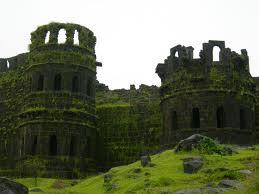located
in Alwar locality in the state of Rajasthan, Sariska is a popular
tourist affinity for the Sariska Tiger book. Established in 1955, the
866 sq km book was renamed Sariska nationwide Tiger book in 1978.
Wildlife species here encompass the regal Bengal tiger, leopard, chital, nilgai, langur, hyena, sambar and the golden jackal among other ones. This place also attracts a large number of birds such as peafowl, sand grouse, kingfisher, golden back wood pecker, crested eagle and the large Indian horned owl, to title a couple of.
Other than the tiger reserve, Sariska is furthermore renowned for chronicled sites such as the Kankawadi Fort, which was constructed in the 17th years by Jai Singh II. Sariska has three more forts of chronicled significance – Bhangarh outpost, Pratapgarh outpost and Ajabgarh Fort located close by.
There are numerous temples in Sariska including the Hanuman Temple in Pandupol, which is a well liked pilgrimage location. Bhatrihari Temple is another pilgrimage location, which is thronged by devotees all through the year.
It is said that the ruler and monarch of Ujjain meditated here giving it the status of a holy pilgrimage location. Apart from temples and wildlife, another affinity is the Sariska castle, which was utilised as a hunting lodge by Maharaja Jai Singh. visitors can also vouch for various appealing packages offer for the trips.
Wildlife species here encompass the regal Bengal tiger, leopard, chital, nilgai, langur, hyena, sambar and the golden jackal among other ones. This place also attracts a large number of birds such as peafowl, sand grouse, kingfisher, golden back wood pecker, crested eagle and the large Indian horned owl, to title a couple of.
Other than the tiger reserve, Sariska is furthermore renowned for chronicled sites such as the Kankawadi Fort, which was constructed in the 17th years by Jai Singh II. Sariska has three more forts of chronicled significance – Bhangarh outpost, Pratapgarh outpost and Ajabgarh Fort located close by.
There are numerous temples in Sariska including the Hanuman Temple in Pandupol, which is a well liked pilgrimage location. Bhatrihari Temple is another pilgrimage location, which is thronged by devotees all through the year.
It is said that the ruler and monarch of Ujjain meditated here giving it the status of a holy pilgrimage location. Apart from temples and wildlife, another affinity is the Sariska castle, which was utilised as a hunting lodge by Maharaja Jai Singh. visitors can also vouch for various appealing packages offer for the trips.
















































